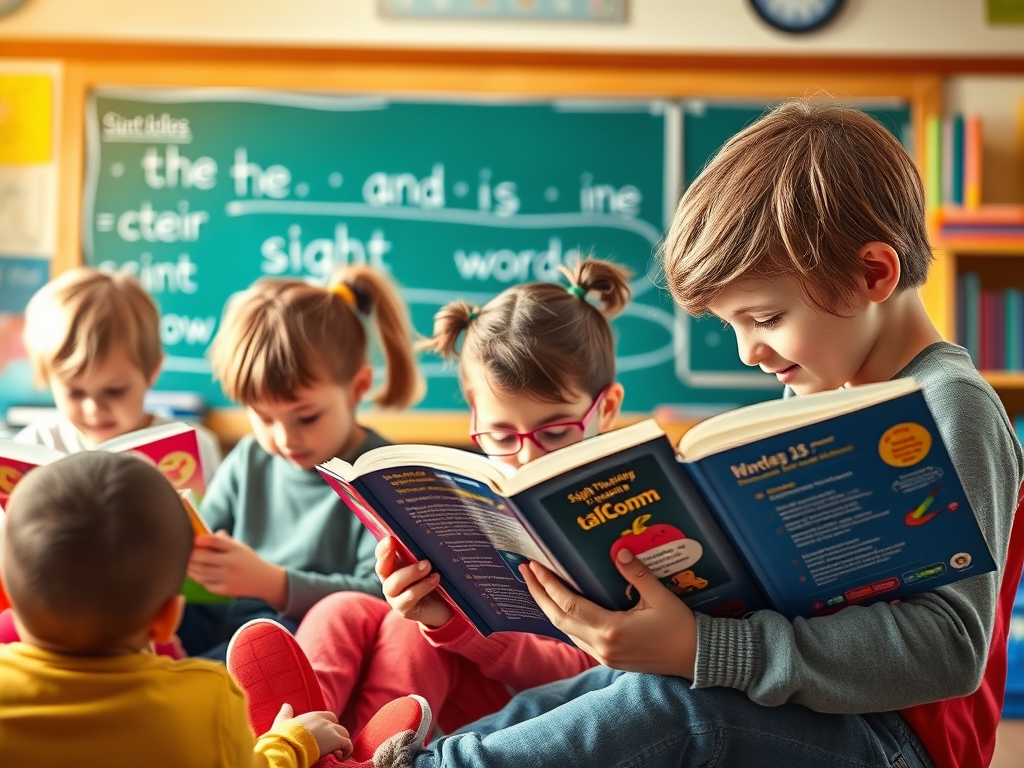In the foundation of literacy, few tools are as pivotal as sight words. These essential words form the backbone of reading fluency and comprehension, allowing young learners to approach texts with confidence. The first hundred sight words are often referred to as the Dolch or Fry sight words. They include high-frequency words that children encounter most often in their reading. In this blog, we will define what sight words are. We will explain why the first hundred are crucial. We will also discuss how they enhance learning for young readers.
What Are Sight Words?
Sight words are common words that children are encouraged to recognize instantly without having to decode them phonetically. Examples include words like “the,” “and,” “is,” “to,” and “it.” These words don’t always follow regular phonetic rules, making them tricky for early readers. As a result, recognizing them by sight—meaning that a child can read the word immediately—helps facilitate smoother and faster reading.
The first hundred sight words are a collection of foundational words. They form a significant portion of texts. Children are likely to encounter these words in their reading journeys.
Why the First Hundred Sight Words Matter
1. Foundation of Reading Fluency The first hundred sight words are crucial. They account for about 50-75% of the words encountered in early childhood books. Mastering these words allows children to read sentences more fluidly, enhancing overall reading fluency. When kids recognize these words on sight, they can focus on understanding the context and meaning of the text. They won’t get bogged down by decoding individual words.
2. Building Comprehension Skills
With a solid grasp of sight words, children are better equipped to comprehend what they are reading. They can quickly recognize common connectors and function words. This enables them to focus on the story or information being presented. As comprehension improves, so does a child’s enjoyment of reading, creating a positive feedback loop that encourages more reading.
3. Boosting Confidence and Motivation Learning the first hundred sight words can significantly boost a child’s confidence. As children progress in recognizing these words, they are more likely to pick up books and want to read independently. This newfound motivation can lead to a lifelong love for reading, encouraging children to explore various genres and topics.
4. Essential for Writing Skills
Sight words are not just critical for reading; they also play a vital role in writing. As children learn to spell and write these high-frequency words, they gain essential tools for constructing sentences. This fluency in usage contributes to better writing skills, further enhancing their literacy development.
How to Teach the First Hundred Sight Words ### 1. Engaging Activities Utilizing fun, engaging activities can make learning sight words enjoyable. Here are a few ideas:
– Flashcards: Create flashcards with sight words, and have children practice them daily. You can turn it into a game by making the activity competitive or timed.
– Sight Word Bingo: Create bingo cards with sight words. As you call out words, children can mark them off on their cards.
– Word Hunts: Hide word cards around the house or classroom and have children find them.
2. Incorporate Technology
Using educational apps and websites can provide interactive and entertaining platforms for children to practice sight words. Many apps offer games and quizzes that make learning fun and engaging.
3. Read Aloud Together
Choose books that emphasize sight words, and read aloud regularly with children. Encourage them to point out sight words as they appear in the text. The practice enhances recognition and reinforces learning within the context of a story.
4. Regular Reinforcement
Consistency is key when teaching sight words. Regular practice and exposure are essential for retention. Create a daily or weekly routine that incorporates a mix of activities, from reading to games, focused on these words.
Conclusion
The first hundred sight words serve as a gateway to literacy for young learners. By prioritizing their recognition and usage, we equip children with the necessary skills to read fluently. They can comprehend effectively. Children can express themselves confidently through writing. Investing time and effort in teaching these sight words will make reading easier for children. It will also help nurture a lifelong passion for literature. It’s a small but mighty step in their educational journey, paving the way for successful readers and writers. Let’s celebrate the power of sight words and the exciting world of reading they unlock!
